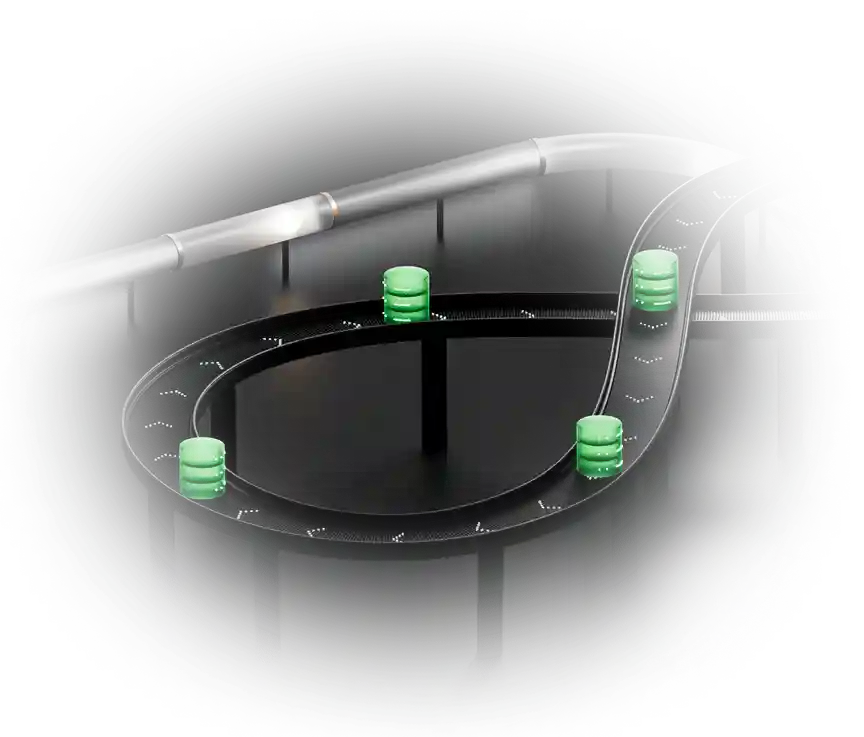
AI-Powered Database Migration Authoring
Why Database DevOps?
Integrate database migrations seamlessly into your application deployment pipelines, gaining centralized governance and visibility into database changes across all environments. Harness database DevOps bridges the gap between application delivery and database management, empowering customers to ship software faster and more reliably.
Orchestrate Database Changes
Integrate database changes into the application deployment pipeline to ensure database and application changes are deployed together.
.webp)
Gain Database Change Visibility
Easily compare database schemas between environments so that you can understand change impact and rollout progress.

Governance
Review and approve schema changes before deployment. Enforce policy on allowed database changes. Environment aware RBAC, policy as code and audit trails.
.webp)
Break down Silos
Provides a centralized way to manage database schemas and enforce governance policies - all while enabling developers and DBAs to collaborate more effectively on database changes.

.avif)

Next-generation CI/CD For Dummies
Stop struggling with tools—master modern CI/CD and turn deployment headaches into smooth, automated workflows.

Treat Database Code Like App Code
Bridge the gap between application delivery and database management with modern CI/CD best practices to ship software faster and more reliably.
.avif)
Define and manage Database Promotion Rules
Leverage a CI/CD pipeline to define environment order and requirements for database deployment.
Optional Rollback Capabilities
Allows rolling back database changes if issues are encountered, reducing downtime and improving reliability.
Visual and Code Editor
Harness provides elegant drag-and-drop and developer friendly as-code experiences. Toggle between them as you like.

Visibility Into Database State
Provides a single pane of glass to see what database changes have been
deployed across environments, helping with troubleshooting and impact analysis.





Cross-Environment Visibility


Effectively understand differences in database state across environments to root cause issues and minimize risk.

Visibility into Recent Changes


Understand when database changes occurred to accelerate root cause analysis.

Ensure Consistency


Ensure all changes consistently reach all expected environments.




Governance
Enables DBAs to enforce policies and controls over the types of
database changes that can be made, ensuring stability and compliance.


Automated Policy Enforcement
Enforce policy on database changes with the full power of OPA to analyze SQL before deployment. Give developers the ability to self-service database changes while central teams dictate rules like, “No Team can drop a table in a production environment.” With OPA, teams can be empowered while scalable guardrails ensure compliance.


Integrated Collaboration
Integrate Manual SQL reviews into your CI/CD pipelines to decrease turnaround time and increase collaboration between devs and DBAs.
Audit Trails
Harness provides clear and easily accessible audit trails so you know who made a change. With better visibility, you can meet your compliance requirements.


Trusted by DBAs, DevOps, and Developers
Hundreds of DevOps and engineering teams that are powered by Harness become elite performers in velocity, quality, efficiency and governance.
Integrations
.png)
.png)
.png)





.webp)



Frequently Asked Questions
What is Compliant Database DevOps?
Compliant Database DevOps integrates databases directly into continuous delivery pipelines with built-in safeguards to protect data while maintaining agility. It combines the speed of DevOps with data security, ensuring data protection is baked into the software development process from the beginning. Key practices include cataloguing and masking data as it moves through environments and monitoring for suspicious activity to meet business objectives while protecting sensitive information.

How do I integrate harness database DevOps with other tools (e.g., Jira, bug tracking)?
Harness connects to Jira using a Jira connector that allows you to create and update Jira issues and use Jira issues in approval steps. You can add Jira approval stages that include Jira create, approval, and update steps directly into your CI/CD pipelines. For CI pipelines, install the CI Enterprise by Harness app in your Jira instance, generate an authentication token, and add a Plugin step to automatically update Jira's Build and Deployment fields with pipeline status. For Database DevOps specifically, the integration follows the same Jira connector approach, allowing you to track database changes and approvals through Jira tickets as part of your compliant database workflows.

How do you manage database version control and migrations?
Database version control uses either a migration-based approach (tracking step-by-step changes via scripts) or state-based approach (defining the desired end state). The migration-based approach tracks specific SQL changes, reference data, and schema modifications from development to production, ensuring consistency and repeatability. Best practices include versioning every change, providing rollback scripts, avoiding hardcoded secrets, and using trunk-based development with feature branches merged via pull requests.

What are the benefits of applying DevOps principles to database management?
Key benefits include faster time to market through automated workflows, improved consistency and reliability across environments, early detection of issues through automated testing, and better collaboration between developers, DBAs, and operations teams. Additional advantages include increased efficiency by saving time on manual tasks, enhanced security through consistent enforcement of best practices, and faster deployment of new features. Harness Database DevOps also accelerates deployment pace, reduces errors from manual processes, and democratizes database management by making advanced operations accessible to smaller teams.

What is the process for automating database deployments?
Automating database deployments involves treating each database change as code with version-controlled scripts that are integrated into CI/CD pipelines alongside application changes. The process includes automatically building databases from source control, running automated tests to catch issues early, and using deployment tools to apply changes consistently across environments.


.svg)
.svg)


